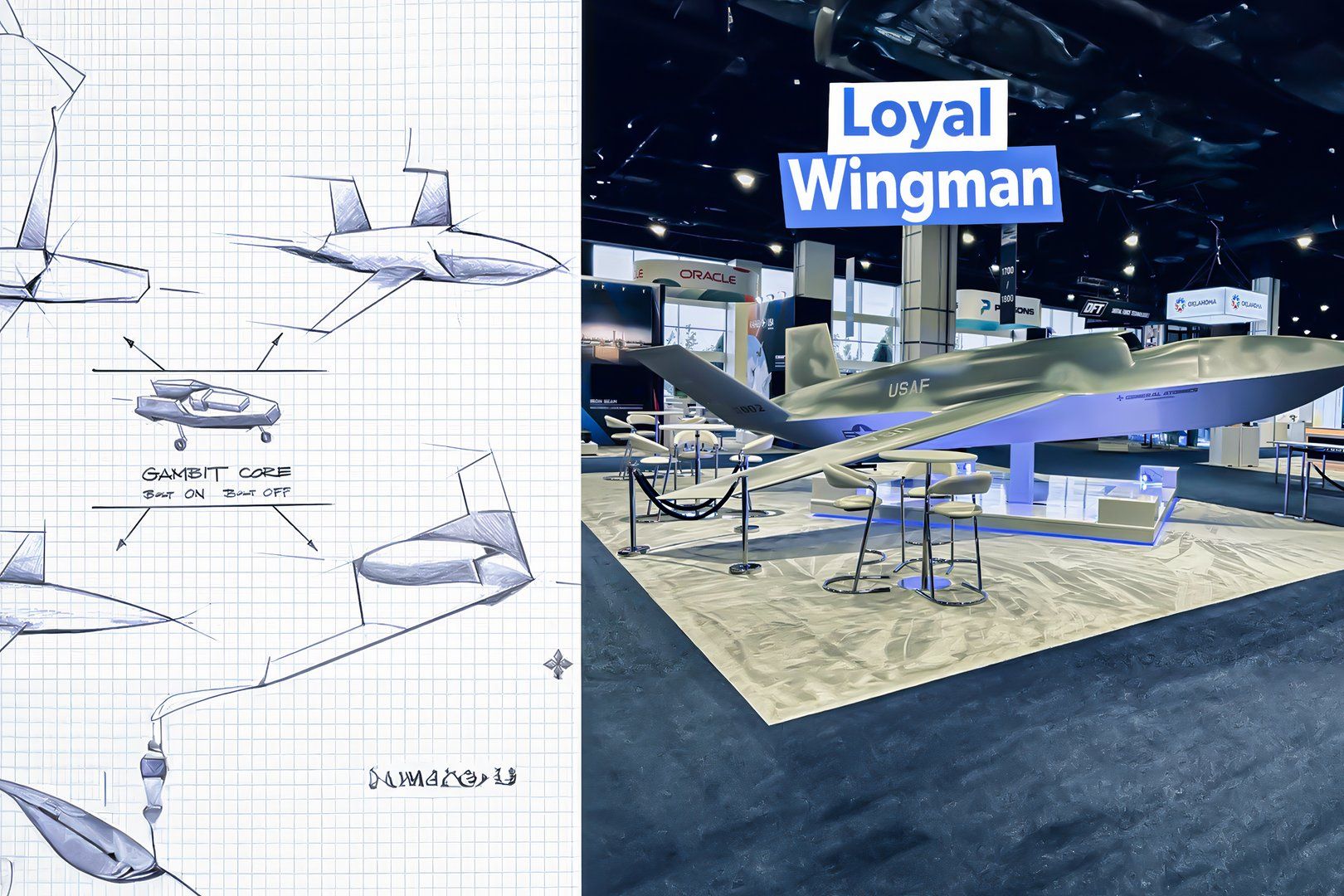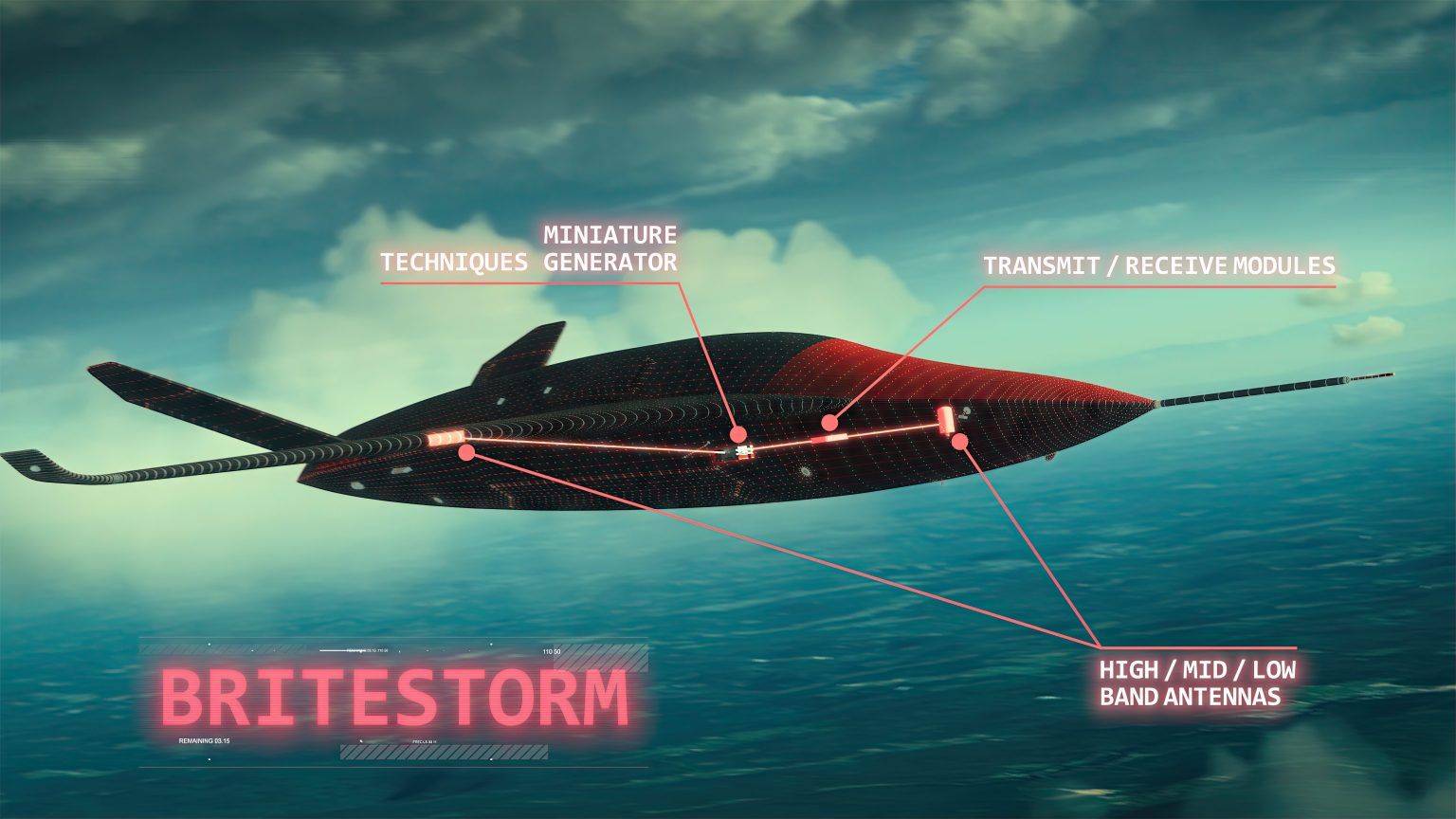Aerospace firm Leonardo has unveiled a new jamming system called “BriteStorm” that will fly ahead of friendly aircraft to interfere with enemy air defenses. The product will be small enough to fit onto drones and is also designed to be affordable and expendable.
Leonardo launches BriteStorm jamming product
According to a company release, the BriteStorm product will be able to perform “stand-in jamming” ahead of the main force, essentially delivering forward jamming capabilities to disrupt enemy Integrated Air Defense Systems (IADS). This is distinct from conventional “stand-off” jamming systems—such as the EA-37B Compass Call or Boeing EA-18G Growler—that operate at a safe distance from enemy defenses.
The system was developed by Leonardo UK at its electronic warfare research and manufacturing base in Luton, UK. In partnership with the UK Royal Air Force’s Rapid Capabilities Office (RCO), Leonardo has already successfully flight-tested BriteStorm, which was made to be compatible with “the widest possible range of UAVs and launched effects.”
According to Defense News, the product itself is apparently the size of six Coca-Cola cans and will weigh about 2.5kg. It will utilize Leonardo’s Digital Radio Frequency Memory (DRFM) technology to “detect and evaluate the electronic warfare threat environment” and will have a wide range of capabilities to confuse enemy systems.
Photo: Leonardo
Unlike Leonardo’s BriteCloud – which uses similar technology to disrupt missile radar guidance systems – BriteStorm was designed to cripple enemy ground-based radar, preventing them from using radar to track aircraft. This includes fabricating “ghost” fighter jet signatures – essentially tricking enemy systems into tracking phantom aircraft – or overwhelming systems with electronic noise.
Unit cost “won’t break the bank”
While it’s obviously good to invest in effective technology like BriteStorm, unit cost is a major consideration. As such, Leonardo says the system will be highly affordable and thus attritable, meaning operators are not hemorrhaging money should their drones be shot down. As quoted by Defense News, Michael Lea, VP of Sales Electronic Warfare at Leonardo UK, said,
“It is priced in a way it can be treated as an attritable asset so it wont break the bank or cause a major strategic issue if shot down.”
Photo: Leonardo
The base product will consist of a platform-specific antenna, transmit-receive modules and Leonardo’s Miniature Technique Generator. The company is showcasing BriteStorm at the Association of the United States Army (AUSA) convention in Washington this week – it said it views the US Department of Defense (DoD) as a key potential customers, and also anticipates interest from customers in Europe, the Middle East and Asia-Pacific.

Related
5 Fast Facts On The USAF Collaborative Combat Aircraft “Loyal Wingman” Drone Program
The emergence of “robot wingmen” is shaping the future of aerial combat, with competing systems like the XQ-58, XQ-67 and MQ-28 taking center stage.
As part of their sixth-generation fighter concepts, many countries are focusing on developing advanced unmanned aerial platforms, and products like BriteStorm will prove a key addition to such platforms. The US is developing its collaborative combat aircraft (CCA) concept to accompany its Next Generation Air Dominance (NGAD) fighter, while the UK, Italy and Japan have “Adjuncts” for the Global Combat Air Programme (GCAP).



